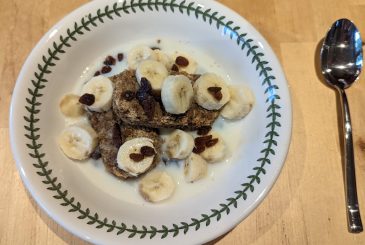Tapering can help you optimise performance if you have a big race on the horizon. Hatty Bates explains what you need to know
Tapering is as much of an art as it is a science; it is important to find out what works best for you. In general, it is the practice of reducing training volume and intensity following a heavy training block or prior to an important race or competition.
The aim of a taper is to optimise performance by reducing both physical and mental stress. What you eat throughout this time can impact the success of your taper, especially from a recovery, immunity, and body composition perspective. This article will explore some key areas to think about to help you feel ready-and-raring to go by the end of a taper.
Fuel for the work required
A successful taper is likely to be lower in both training intensity and volume compared to a normal training week. As an example, sessions on the water may be easier or you may have more rest days compared to what you are used to.
You may have heard of the phrase “fuel for the work required” which involves manipulating carbohydrate intake on a daily basis depending on the intensity and duration of a training session. For example, on a heavy training day (e.g. one water and one land-based training session) more carbohydrate will need to be consumed as part of a pre-training meal and throughout the day compared to a rest day.
Conversely, on rest days, energy expenditure is likely to be lower and therefore meals and snacks tend to be lower in carbohydrate and higher in protein in order to match energy requirements and promote satiety. Manipulating carbohydrate intake throughout the taper will ensure that you are fuelling and recovering well from training sessions as well as managing body composition.
Focus on recovery
A taper is often programmed following an intense or heavy training block to help you physically and mentally recover. Therefore, your nutrition should also play a key role in recovery by helping to replenish energy stores and reduce muscle fatigue.
Throughout the taper, keep in mind the ‘Three Rs of Recovery’ – refuel, repair and rehydrate.
Post-training meals should contain at least 1-1.2g or carbohydrate per kilogram of body mass to replenish glycogen stores, as well as a lean source of protein (containing approximately 20-40g protein) to support muscle repair. Post-training meals should be consumed within two to three hours of finishing training. Great examples include salmon with sweet potato and vegetables, chicken fajitas, and scrambled eggs on toast.
Some rowers may also want to have a post-training snack within the first hour of finishing training. Chocolate milk, smoothies and granola with Greek yoghurt are all great examples of post-training snacks to really kick-start that recovery process.
Throughout the taper, try to have at least five portions of fruit and vegetables per day
Keep on top of your hydration
The importance of hydration throughout a taper can often be overlooked. Keeping well hydrated is important for many physiological processes as well as temperature control and concentration. Good hydration habits include drinking a glass of water when you wake up, having a glass of water with every main meal and carrying a water bottle around with you.
On the day of a race, it is important to start the race well-hydrated. Aim to have 5-7ml/kg and 3-5ml/kg of water alongside your pre-race meal and snack, respectively.
Protect the immune system
After a heavy or intense training block, the immune system can sometimes be compromised. During a taper, it is important to rest and remain healthy prior to the race.
To support the immune system meals and snacks should be nutrient-dense and be packed full of vitamins and minerals. Throughout the taper, try to have at least five portions of fruit and vegetables per day. This can easily be achieved by including at least two or three different vegetables at each meal as well as one portion of fruit as a snack.
In addition, omega-3 fatty acids can also help support the immune system. Throughout the taper, aim to consume one portion of oily fish such as salmon or mackerel at least once per week. Plant-based omega-3 sources include chia seeds, flax seeds, and walnuts.
Pack in the antioxidants
Consuming an antioxidant-rich diet throughout a taper could also help reduce muscle damage, fatigue, and any unnecessary inflammation. Antioxidant rich foods include berries, beetroot, and spinach. Some spices (e.g. turmeric and ginger) and nuts (e.g. walnuts and pecans) are also high in antioxidants.
Summary
Tapering prior to a race or competition can help you prepare both physically and mentally. Throughout a taper it is important to maintain a high-quality nutrient dense diet which promotes good recovery, supports the immune system, and helps you stay hydrated.
Photo: Drew Smith










